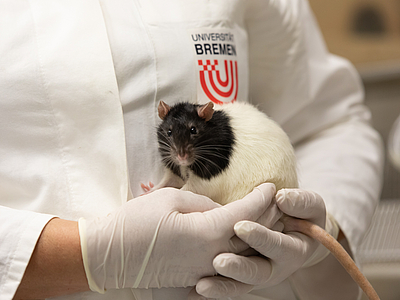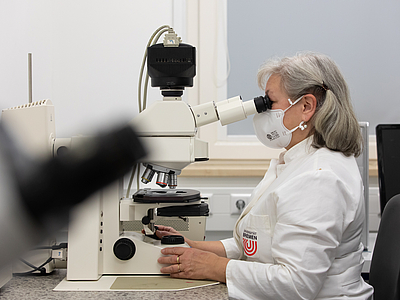Neuropharmacology Research Group
Questions on Neuropharmacology Research
In the Neuropharmacology Research Group at the University of Bremen, basic research is carried out with rats. The scientists hope to gain a better understanding of the neurobiological basis of important brain functions - such as learning and memory, attention and behavioral flexibility. Since information processing in the brain is predominantly carried out by chemical messengers (neurotransmitters), the focus of their research is on the pharmacological manipulation of these cognitive functions.
Experimental neuro- and behavioral pharmacology thus forms the basis for understanding the pharmacotherapy of neuropsychiatric diseases (for example, forms of dementia, Parkinson's disease, schizophrenia, autism, addictive disorders, and depression) and the effects of drugs (such as cannabis, psychostimulation, and psychedelics).
The rats are kept in a climate-controlled animal enclosure under a natural day-night rhythm. They live in small groups of two to six animals in Eurostandard cages (floor space of 1500 cm2) with bedding, hiding places, and play material. The housing conditions for laboratory animals in scientific facilities are specified by the applicable animal welfare laws and standardized worldwide to ensure the transferability of experimental results from laboratory to laboratory. The health of the animals is checked daily. The official veterinarians from the veterinary authorities regularly inspect the animal facilities.
During the experiments, the rats are administered substances that have a very specific effect on neurotransmitter function. Behavioral tests are performed, through which specific cognitive performance of the animals can be tested. After completion of the behavioral experiments, the rats are euthanized and their brains are examined using various detection methods. Usually, the animals are then about 18 months old and have thus reached a relatively high age (wild rats live a maximum of one year on average).
Changes in brain function that correlate with behavioral changes are detected microscopically on brain slices using histological or immunohistochemical staining methods. For the behavioral measurements, the researchers use tests that are as clearly transferable as possible to behavioral tests in humans.

![[Translate to English:] The air-conditioned room where the cages of the rats are placed. 17 plastic cages are stacked against the wall.](/fileadmin/_processed_/b/a/csm_Uni-Bremen-Labore-Tiere-2021-klein-8367_43b6691d65.jpg)



